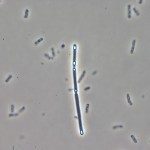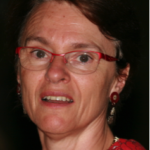Lien vers Pubmed [PMID] – 3112519
Mol. Gen. Genet. 1987 Jun;208(1-2):177-84
The structural gene for the enzyme levanase of Bacillus subtilis (SacC) was cloned in Escherichia coli. The cloned gene was mapped by PBS1 transduction near the sacL locus on the B. subtilis chromosome, between leuA and aroD. Expression of the enzyme was demonstrated both in B. subtilis and in E. coli. The presence of sacC allowed E. coli to grow on sucrose as the sole carbon source. The complete nucleotide sequence of sacC was determined. It includes an open reading frame of 2,031 bp, coding for a protein with calculated molecular weight of 75,866 Da, including a putative signal peptide similar to precursors of secreted proteins found in Bacilli. The apparent molecular weight of purified levanase is 73 kDa. The sacC gene product was characterized in an in vitro system and in a minicell-producing strain of E. coli, confirming the existence of a precursor form of levanase of about 75 kDa. Comparison of the predicted aminoacid sequence of levanase with those of the two other known beta-D-fructofuranosidases of B. subtilis indicated a homology with sucrase, but not with levansucrase. A stronger homology was detected with the N-terminal region of yeast invertase, suggesting the existence of a common ancestor.




